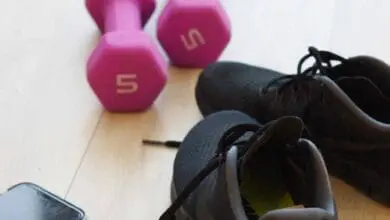How to Start Running: 10 Beginner Tips to Help You Get Started (and Stick With It)
Running is one of the most accessible and effective forms of exercise. You don’t need fancy equipment or a gym membership—just a good pair of shoes and the motivation to take that first step.
But let’s be honest: starting a running routine can feel intimidating, especially if you’re new to fitness or haven’t been active in a while. The key is to start slow, listen to your body, and build consistency over time.
Whether you want to run for weight loss, mental clarity, heart health, or just to feel more energized, here are 10 beginner-friendly tips to help you ease into running and actually enjoy it.
1. Start with a Walk-Run Program
Don’t feel pressured to run a full mile on your first day. Begin with a combination of walking and running, such as 1 minute of jogging followed by 2 minutes of walking. Repeat this cycle for 20–30 minutes.
This method builds endurance gradually and reduces your risk of injury.
2. Invest in a Good Pair of Running Shoes
Proper footwear makes a huge difference. Visit a store that specializes in running gear to get fitted based on your foot type and running style.
Wearing the right shoes helps prevent pain and keeps you comfortable as you increase your distance.
3. Focus on Time, Not Distance
When you’re starting out, it’s better to focus on how long you’re moving rather than how far. Aim for 20–30 minutes of walking/jogging a few times a week, and let distance come naturally as your stamina improves.
4. Warm Up and Cool Down
Always start your run with 5 minutes of brisk walking or dynamic stretches to warm up your muscles. After your run, cool down with a slow walk and gentle stretches to aid recovery.
Skipping these steps increases the risk of muscle soreness or injury.
5. Don’t Run Every Day
Your body needs time to rest and recover—especially in the beginning. Try running 3 times per week on non-consecutive days, and use the other days for walking, stretching, or light cross-training like cycling or swimming.
6. Track Your Progress
Use a fitness app or journal to log your runs. Track how long you ran, how you felt, and any improvements. Seeing your progress can be incredibly motivating and helps you stay on track.
7. Dress for the Weather
Light, breathable fabrics work best in warm weather, while layers and moisture-wicking materials help in colder conditions. Always wear visible colors if running outdoors.
Being comfortable while you run can make the experience more enjoyable—and safer.
8. Stay Hydrated and Fuel Properly
Drink water before and after your run, and have a light snack if needed. A banana or a piece of toast with peanut butter can give you the energy you need without feeling too heavy.
9. Listen to Your Body
It’s normal to feel sore or out of breath at first, but if you feel sharp pain, dizziness, or extreme fatigue, it’s a sign to slow down or take a break. Progress takes time—be kind to yourself.
10. Set Small, Realistic Goals
Set achievable goals like “Run for 10 minutes without stopping” or “Complete 3 runs this week.” Celebrate your wins—every step counts!
Once you build consistency, you can set bigger goals like running your first 5K.
Final Thoughts
Starting a running journey is a powerful step toward better physical and mental health. You don’t have to be fast or go far—you just have to show up for yourself.
By following these beginner tips and taking it one run at a time, you’ll build confidence, strength, and a routine that supports your overall well-being.
Lace up your shoes, take that first step, and remember: every runner starts somewhere—and today, that runner is you.



